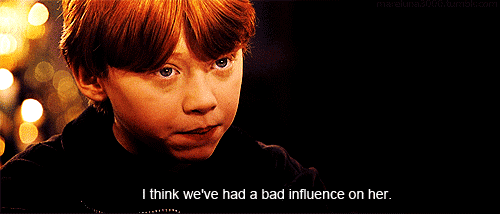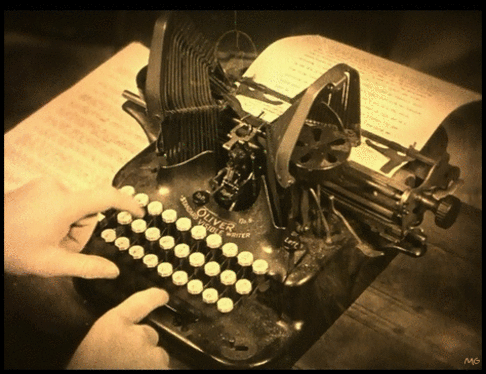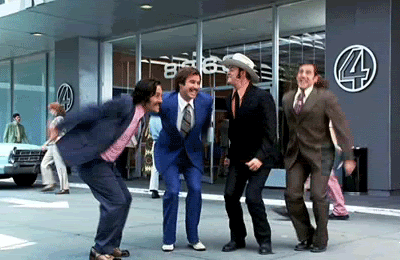Navigation
Results and Outcomes
Assessing Outcomes

Although the GIF assignments described here were embedded in a particular institutional and academic context and contributed to courses that involved semester-long investigations of the use of technology in the production of text, this approach can operate successfully as a stand-alone assignment in a variety of English courses. As a whole, the use of GIFs to assist students in both interpreting texts and reflecting on class experiences resulted in three observable positive outcomes: first, coding with GIFs pushed students to read and engage with texts more critically by going beyond surface representation to the underlying emotional import of a scene or classroom moment; second, in both Meaghan and Josh’s classes, coding with GIFs offered students an experience with digital media that highlighted the changing nature of contemporary composing and emphasized the connection between material textuality and textual production; and third, students expressed greater emotional connection to their work, both writing reflections and critical remediations.

First, coding texts with GIFs encouraged students to think critically by making connections between the texts and the GIFs themselves, animating Yancey’s (1998) concepts of “reflection-in-action,” “constructive reflection,” and “reflection-in-presentation.” By asking students to present their understanding visually in sync with their text, coding with GIFs promoted a unique process of textual production and interpretation. In Meaghan’s HoIT class, The Canterbury Tales was placed in dialogue with a wide variety of modern texts—romantic comedy movies, reality TV shows, children’s movies (both live action and animated), and born digital media, to name a few. As one student explained in her response paper, “HTML allows readers to learn through discovery,” pointing to the process of selecting GIFs as a free association reading exercise. This process of learning through discovery—frequently, through a Google image search that involved the mostly serendipitous discovery of GIFs—animates reflection-in-action by making the process of “reviewing and projecting and revising” a central feature of HTML composing. Through the process of searching for GIFs, students were making interpretive choices about the source text, reflecting on the text, as well as actively strategizing on how to present their interpretation through GIFs. Another student cited this search as the primary means of increasing his interest in the main text:

In other words, tinkering with premade GIFs aided the student in understanding the text he was reading because each GIF allowed him to test his understanding against movie and TV clips that have become cultural short-hand for specific emotional reactions, plot devices, and character traits.
Second, by virtue of this process of reviewing, projecting, and revising,
students participate in constructive reflection, developing a multi-voiced
interpretation of their texts and their experiences. Students assume a variety of identities through the different
characters in the GIFs, employing them as digital avatars.
Characters in the narrative—whether fictional or not—continually
shift subject position throughout the narratives, resulting in a text that
demonstrates that interpretations and reflections entail an assemblage of voices
and positions. In particular, Yancey emphasizes that constructive reflection
draws from the specific practices students experience while writing to develop
principles and, ultimately, “prototypical models” that can
span rhetorical situations (p. 50). One student explained that: 
The students saw the chance to juxtapose a variety of texts as one of the main strengths of the medium:

Third, the process of selection also animates Yancey’s concept of “reflection-in-presentation,” in that the rhetorical presentation of their writing is self-consciously mediated through a wide variety of GIFs and represents a fusing of reflection, construction of identity, and textual design. Yancey sees this form of reflection as involving “an explaining both of the self and about the self to an outside audience” (p. 70). In particular, this kind of reflection highlights a tension between “the actual self and the represented self” (p. 72). In Josh’s WEPO class, students performed this tension on two levels simultaneously: first, through the written text itself, students articulated their individual experiences in the class to their teacher, aiming to strike a balance between what Yancey describes as the public and academic and the personal and extra-curricular writing. Second, students perform this tension through the GIFs, visuals which students selected as avataristic representations of themselves as writers and class participants. Through the integration of GIFs, students reflected more critically and complexly on the relationships between themselves and the class as a whole.

The hands-on maker’s approach that Josh and Meaghan took with their classes emphasizes how technology has always played a significant role in changing how writers compose and underscores the relationship between materiality and textual production. Shipka (2011), in particular, argues that literacy and communication are linked to a “wide variety of technologies—both new and not-so-new—informing the production, reception, circulation, and valuation of texts” (p. 40). Ultimately, Shipka’s understanding of technology underscores that all communicative practice is material and multimodal, as well as situated and embodied. As one of the WEPO students explained, an important aspect of understanding “Larsen’s text about the role of technology in the composing process” involved seeing the technologies in contrast to each other:
Further, Shipka’s approach re-envisions the writer as an “individual-acting-with-mediational means,” a lens that attends to “the ways individuals work with—as well as against, or in spite of—the mediation means employed” (p. 48). By asking students to work with a variety of unfamiliar writing tools, Meaghan and Josh encouraged the exploration of different composing strategies which challenged them to expand their views of writing. Many students expressed anxiety about coding, explaining that it was something well outside their experience and even something they saw as “farfetched” from the context of a class on the history of texts. Feelings of self-doubt over the ability to complete the assignment were more common with digital projects than nearly any other media:

The majority, however, reflected on the parallels between digital media and earlier technologies explored in both classes and found the exercises to be not only fruitful, but enjoyable:
In the end, the inital feelings of self-doubt may have contributed to the high rates of satisfaction students reported with this assignment. By seeing digital composition in the same context as other forms of textual creation, they reclassified the creation of websites from a specialized and intimidating skill to writing with a new set of tools:
Finally, by virtue of coding with GIFs, students expressed both emotional
attachment to and greater ownership of their compositions in both their writing
reflections and critical remediations. One possible reason for this was that coding with
HTML, for some students, gave them more control over the design of their text. For
Kress, “design” represents “a means for action in
the designer’s interest” using “the resources
available to them in specific situations” and, by giving students more
control over their writing tools, the students claimed that they were better able to express their ideas and often stated that they were proud of their work
(p. 23). In her journal response, one student commented:
able to express their ideas and often stated that they were proud of their work
(p. 23). In her journal response, one student commented:
Further, Kress’ concept of design underscores that composers actively shape knowledge through representation and, in Meaghan and Josh’s hands-on classes, this translated into more active engagement with course material (p. 27). In the History of Illustrated Text course, for example, some students felt that employing GIFs, they were better able to articulate their understanding of the text they chose to remediate. In addition, the kinds of multimodal texts students created may be a more accurate reflection of the kinds of “hybrid” literacies that Williams advocates.
The use of GIFs in the classroom draws from the kinds of writing practices students are already using outside of school—employing GIFs to convey emotional reactions to texts and experiences. They provide an entry point to kinds of composition students regularly find intimidating and which they also see as useful to future careers: coding in HTML and CSS. GIFs also encourage students, as Selber advocates, to become critical and rhetorical users of hypertext. In her reflection, one student wrote:

Promoting the use of GIFs helps students to think more concretely about writing in the 21st century and more confidently confront the challenges of composing within the context of digital technology, visual culture, and the Internet.